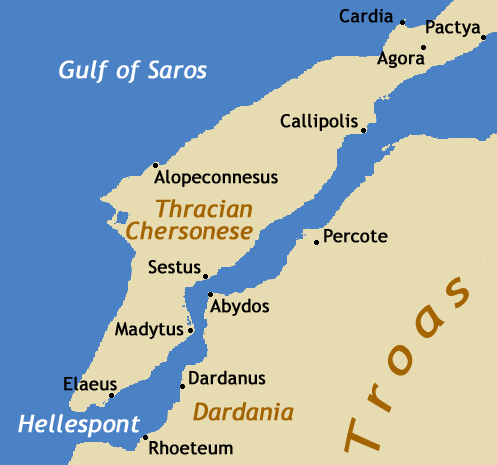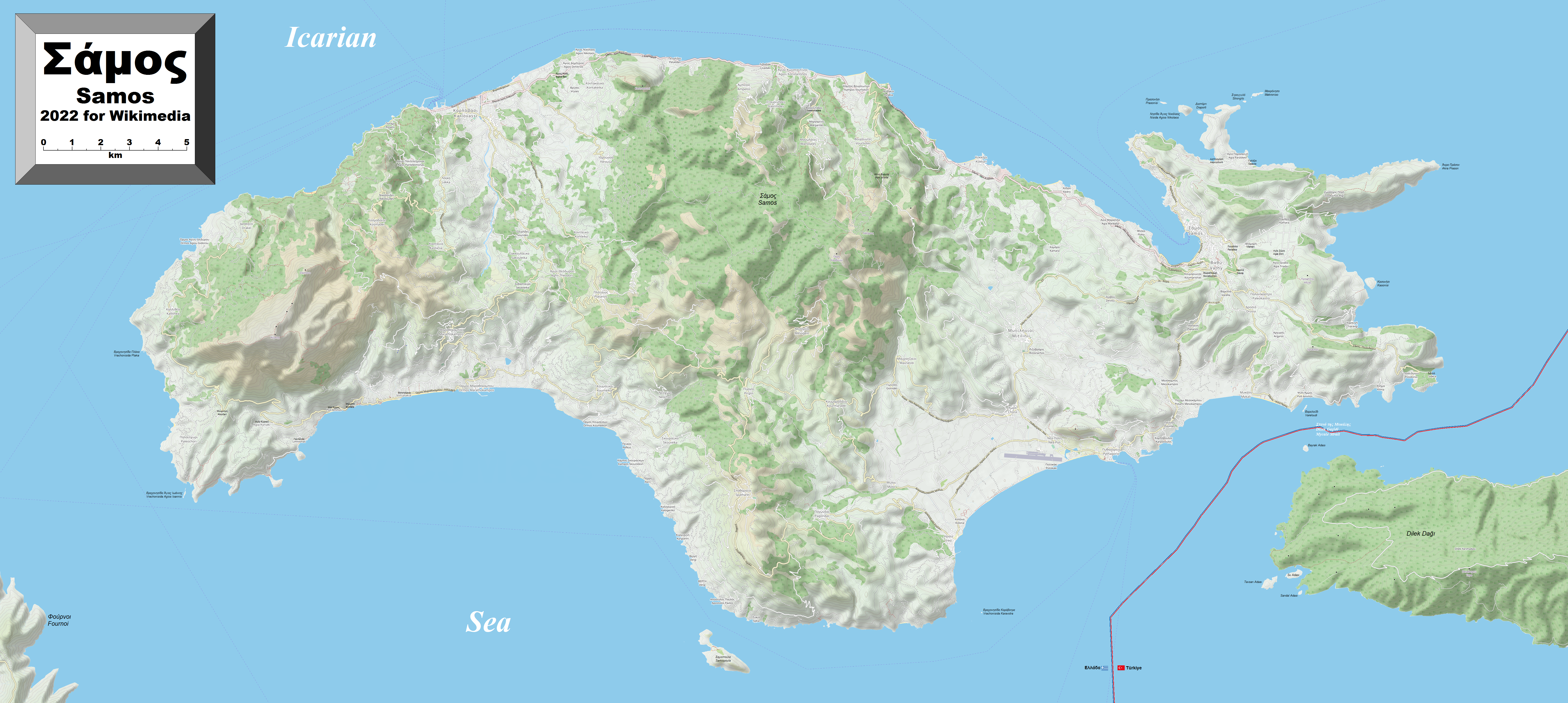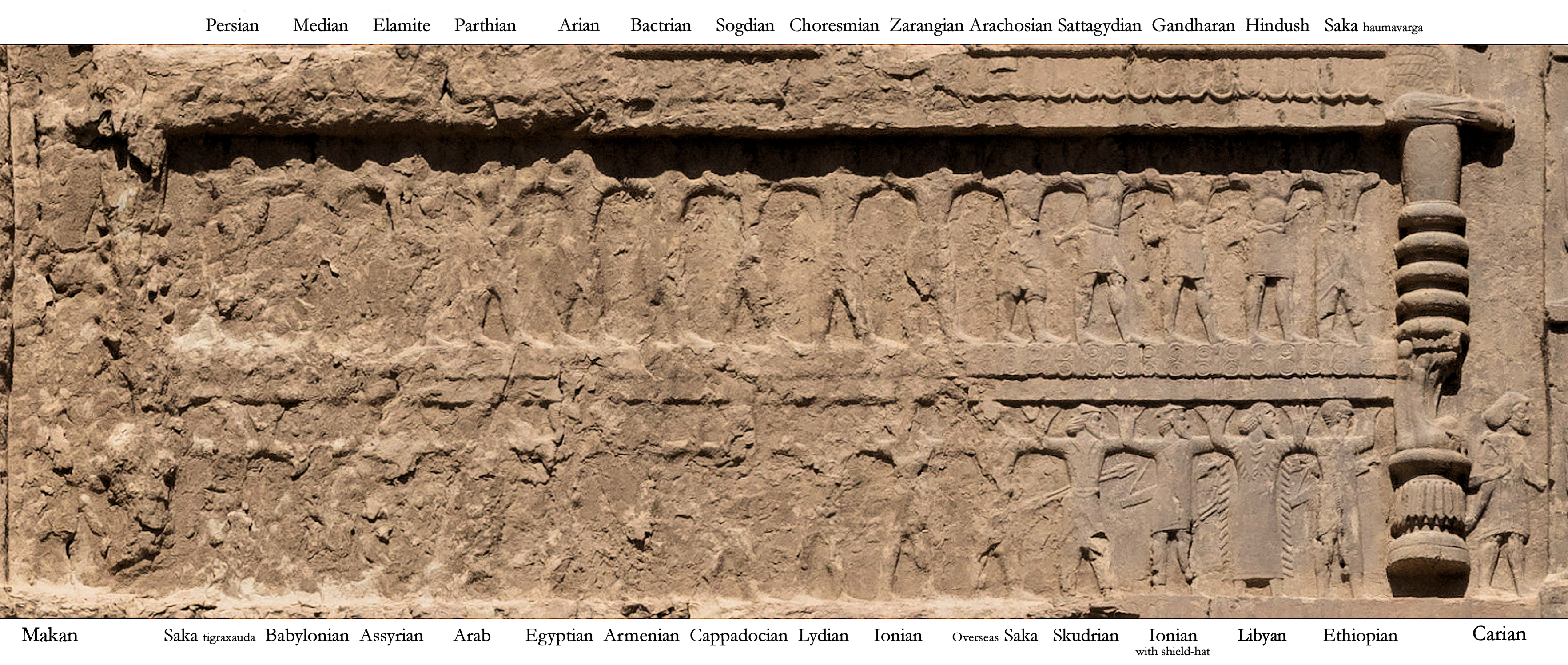|
Battle Of Aegospotami
The Battle of Aegospotami was a naval confrontation that took place in 405 BC and was the last major battle of the Peloponnesian War. In the battle, a Spartan fleet under Lysander destroyed the Athenian navy. This effectively ended the war, since Athens could not import grain or communicate with its empire without control of the sea. Prelude Lysander's campaigns In 405 BC, following the severe Spartan defeat at the Battle of Arginusae, Lysander, the commander who had been responsible for the first Spartan naval successes, was reinstated in command. Since the Spartan constitution prohibited any commander from holding the office of navarch more than once, he was appointed as a vice-admiral instead, with the clear understanding that this was a mere legal fiction. One of Lysander's advantages as a commander was his close relationship with the Persian prince Cyrus. Using this connection, he quickly raised the money to begin rebuilding the Spartan fleet. When Cyrus was recalled t ... [...More Info...] [...Related Items...] OR: [Wikipedia] [Google] [Baidu] |
Peloponnesian War
The Peloponnesian War (431–404 BC) was an ancient Greek war fought between Athens and Sparta and their respective allies for the hegemony of the Greek world. The war remained undecided for a long time until the decisive intervention of the Persian Empire in support of Sparta. Led by Lysander, the Spartan fleet built with Persian subsidies finally defeated Athens and started a period of Spartan hegemony over Greece. Historians have traditionally divided the war into three phases. The first phase (431–421 BC) was named the Ten Years War, or the Archidamian War, after the Spartan king Archidamus II, who launched several invasions of Attica with the full hoplite army of the Peloponnesian League, the alliance network dominated by Sparta. However, the Long Walls of Athens rendered this strategy ineffective, while the superior navy of the Delian League (Athens' alliance) raided the Peloponnesian coast to trigger rebellions within Sparta. The precarious Peace of Nicias ... [...More Info...] [...Related Items...] OR: [Wikipedia] [Google] [Baidu] |
Battle Of Arginusae
The naval Battle of Arginusae took place in 406 BC during the Peloponnesian War near the city of Canae in the Arginusae islands, east of the island of Lesbos. In the battle, an Athenian fleet commanded by eight strategoi defeated a Spartan fleet under Callicratidas. The battle was precipitated by a Spartan victory which led to the Athenian fleet under Conon being blockaded at Mytilene; to relieve Conon, the Athenians assembled a scratch force composed largely of newly constructed ships manned by inexperienced crews. This inexperienced fleet was thus tactically inferior to the Spartans, but its commanders were able to circumvent this problem by employing new and unorthodox tactics, which allowed the Athenians to secure a dramatic and unexpected victory. Slaves and metics who participated in the battle may have been granted Athenian citizenship. The news of the victory itself was met with jubilation at Athens. Their joy was tempered, however, by the aftermath of the battle, i ... [...More Info...] [...Related Items...] OR: [Wikipedia] [Google] [Baidu] |
Lampsacus
Lampsacus (; grc, Λάμψακος, translit=Lampsakos) was an ancient Greek city strategically located on the eastern side of the Hellespont in the northern Troad. An inhabitant of Lampsacus was called a Lampsacene. The name has been transmitted in the nearby modern town of Lapseki. Ancient history Originally known as Pityusa or Pityussa ( grc, Πιτυούσ(σ)α), it was colonized from Phocaea and Miletus. In the 6th century BC Lampsacus was attacked by Miltiades the Elder and Stesagoras, the Athenian tyrants of the nearby Thracian Chersonese. During the 6th and 5th centuries BC, Lampsacus was successively dominated by Lydia, Persia, Athens, and Sparta. The Greek tyrants Hippoclus and later his son Acantides ruled under Darius I. Artaxerxes I assigned it to Themistocles with the expectation that the city supply the Persian king with its famous wine. When Lampsacus joined the Delian League after the battle of Mycale (479 BC), it paid a tribute of twelve talents, a testimony ... [...More Info...] [...Related Items...] OR: [Wikipedia] [Google] [Baidu] |
Abydos, Hellespont
Abydos ( grc, Ἄβυδος, la, Abydus) was an ancient city and bishopric in Mysia. It was located at the Nara Burnu promontory on the Asian coast of the Hellespont (the straits of Dardanelles), opposite the ancient city of Sestos, and near the city of Çanakkale in Turkey. Abydos was founded in c. 670 BC at the most narrow point in the straits, and thus was one of the main crossing points between Europe and Asia, until its replacement by the crossing between Lampsacus and Kallipolis in the 13th century, and the abandonment of Abydos in the early 14th century. In Greek mythology, Abydos is presented in the myth of Hero and Leander as the home of Leander. The city is also mentioned in ''Rodanthe and Dosikles'', a novel written by Theodore Prodromos, a 12th-century writer, in which Dosikles kidnaps Rodanthe at Abydos. Archaeology In 1675, the site of Abydos was first identified, and was subsequently visited by numerous classicists and travellers, such as Robert Wood, Richard ... [...More Info...] [...Related Items...] OR: [Wikipedia] [Google] [Baidu] |
Attica
Attica ( el, Αττική, Ancient Greek ''Attikḗ'' or , or ), or the Attic Peninsula, is a historical region that encompasses the city of Athens, the capital of Greece and its countryside. It is a peninsula projecting into the Aegean Sea, bordering on Boeotia to the north and Megaris to the west. The southern tip of the peninsula, known as Laurion, was an important mining region. The history of Attica is tightly linked with that of Athens, and specifically the Golden Age of Athens during the classical period. Ancient Attica ( Athens city-state) was divided into demoi or municipalities from the reform of Cleisthenes in 508/7 BC, grouped into three zones: urban (''astu'') in the region of Athens main city and Piraeus (port of Athens), coastal (''paralia'') along the coastline and inland ('' mesogeia'') in the interior. The modern administrative region of Attica is more extensive than the historical region and includes Megaris as part of the regional unit West Att ... [...More Info...] [...Related Items...] OR: [Wikipedia] [Google] [Baidu] |
Salamis Island
Salamis ( ; el, Σαλαμίνα, Salamína; grc, label= Ancient and Katharevousa, Σαλαμίς, Salamís) is the largest Greek island in the Saronic Gulf, about off-coast from Piraeus and about west of central Athens. The chief city, Salamina, lies in the west-facing core of the crescent on Salamis Bay, which opens into the Saronic Gulf. On the eastern side of the island is its main port, Paloukia, in size second in Greece only to the port of Piraeus. Name The traditional etymology of Salamis derives it from the eponymous nymph Salamis, the mother of Cychreus, the legendary first king of the island. A more modern theory considers "Salamis" to come from the root ''sal'' 'salt' and ''-amis'' 'middle'; thus ''Salamis'' would be the place amid salt water. Other fringe theories have attempted to connect the name to the Semitic root Š-L-M 'health, safety, peace', because of the well-sheltered harbor, but have been for the most part rejected by the academic community. Fro ... [...More Info...] [...Related Items...] OR: [Wikipedia] [Google] [Baidu] |
Aegina
Aegina (; el, Αίγινα, ''Aígina'' ; grc, Αἴγῑνα) is one of the Saronic Islands of Greece in the Saronic Gulf, from Athens. Tradition derives the name from Aegina, the mother of the hero Aeacus, who was born on the island and became its king. Administration Municipality The municipality of Aegina consists of the island of Aegina and a few offshore islets. It is part of the Islands regional unit, Attica region. The municipality is subdivided into the following five communities (population in 2011 in parentheses ): * Kypseli (2124) * Mesagros (1361) * Perdika (823) * Vathy (1495) The regional capital is the town of Aegina, situated at the northwestern end of the island. Due to its proximity to Athens, it is a popular vacation place during the summer months, with quite a few Athenians owning second houses on the island. Province The province of Aegina ( el, Επαρχία Αίγινας) was one of the provinces of Greece, provinces of the Attica Prefectu ... [...More Info...] [...Related Items...] OR: [Wikipedia] [Google] [Baidu] |
Samos Island
Samos (, also ; el, Σάμος ) is a Greek island in the eastern Aegean Sea, south of Chios, north of Patmos and the Dodecanese, and off the coast of western Turkey, from which it is separated by the -wide Mycale Strait. It is also a separate regional unit of the North Aegean region. In ancient times, Samos was an especially rich and powerful city-state, particularly known for its vineyards and wine production. It is home to Pythagoreion and the Heraion of Samos, a UNESCO World Heritage Site that includes the Eupalinian aqueduct, a marvel of ancient engineering. Samos is the birthplace of the Greek philosopher and mathematician Pythagoras, after whom the Pythagorean theorem is named, the philosophers Melissus of Samos and Epicurus, and the astronomer Aristarchus of Samos, the first known individual to propose that the Earth revolves around the sun. Samian wine was well known in antiquity and is still produced on the island. The island was governed by the semi-autonomou ... [...More Info...] [...Related Items...] OR: [Wikipedia] [Google] [Baidu] |
Darius II
Darius II ( peo, 𐎭𐎠𐎼𐎹𐎺𐎢𐏁 ; grc-gre, Δαρεῖος ), also known by his given name Ochus ( ), was King of Kings of the Achaemenid Empire from 423 BC to 405 or 404 BC. Artaxerxes I, who died in 424 BC, was followed by his son Xerxes II. After a month and half Xerxes II was murdered by his brother Sogdianus. His illegitimate brother, Ochus, satrap of Hyrcania, rebelled against Sogdianus, and after a short fight killed him, and suppressed by treachery the attempt of his own brother Arsites to imitate his example. Ochus adopted the name Darius (Greek sources often call him Darius ''Nothos'', "Bastard"). Neither the names Xerxes II nor Sogdianus occur in the dates of the numerous Babylonian tablets from Nippur; here effectively the reign of Darius II follows immediately after that of Artaxerxes I. Historians know little about Darius II's reign. A rebellion by the Medes in 409 BC is mentioned by Xenophon. It does seem that Darius II was quite dependent o ... [...More Info...] [...Related Items...] OR: [Wikipedia] [Google] [Baidu] |
Susa
Susa ( ; Middle elx, 𒀸𒋗𒊺𒂗, translit=Šušen; Middle and Neo- elx, 𒋢𒋢𒌦, translit=Šušun; Neo-Elamite and Achaemenid elx, 𒀸𒋗𒐼𒀭, translit=Šušán; Achaemenid elx, 𒀸𒋗𒐼, translit=Šušá; fa, شوش ; he, שׁוּשָׁן ; grc-gre, Σοῦσα ; syr, ܫܘܫ ; pal, 𐭮𐭥𐭱𐭩 or ; peo, 𐏂𐎢𐏁𐎠 ) was an ancient city in the lower Zagros Mountains about east of the Tigris, between the Karkheh and Dez Rivers in Iran. One of the most important cities of the Ancient Near East, Susa served as the capital of Elam and the Achaemenid Empire, and remained a strategic centre during the Parthian and Sasanian periods. The site currently consists of three archaeological mounds, covering an area of around one square kilometre. The modern Iranian town of Shush is located on the site of ancient Susa. Shush is identified as Shushan, mentioned in the Book of Esther and other Biblical books. Name The English name is der ... [...More Info...] [...Related Items...] OR: [Wikipedia] [Google] [Baidu] |
Cyrus The Younger
Cyrus the Younger ( peo, 𐎤𐎢𐎽𐎢𐏁 ''Kūruš''; grc-gre, Κῦρος ; died 401 BC) was an Achaemenid prince and general. He ruled as satrap of Lydia and Ionia from 408 to 401 BC. Son of Darius II and Parysatis, he died in 401 BC in battle during a failed attempt to oust his elder brother, Artaxerxes II, from the Persian throne. The history of Cyrus and of the retreat of his Greek mercenaries is told by Xenophon in his '' Anabasis''. Another account, probably from Sophaenetus of Stymphalus, was used by Ephorus. Further information is contained in the excerpts from Artaxerxes II's physician, Ctesias, by Photius; ''Plutarch’s Lives'' of Artaxerxes II and Lysander; and Thucydides' ''History of Peloponnesian War''. These are the only early sources of information on Cyrus the Younger. Biography According to Xenophon, Cyrus the Younger was born after the accession of his father in 424 BC. He had an elder brother, Arsicas (whose name changed to Artaxerxes II wh ... [...More Info...] [...Related Items...] OR: [Wikipedia] [Google] [Baidu] |
Achaemenid Dynasty
The Achaemenid dynasty (Old Persian: ; Persian: ; Ancient Greek: ; Latin: ) was an ancient Persian royal dynasty that ruled the Achaemenid Empire, an Iranian empire that stretched from Egypt and Southeastern Europe in the west to the Indus Valley in the east. Origins The history of the Achaemenid dynasty is mainly known through Greek historians such as Herodotus, Ctesias, and Xenophon; the Hebrew Bible and other Jewish religious texts; and native Iranian sources. According to Herodotus, the Achaemenids were a clan from the tribe of the Pasargadae and probably settled surrounding the site of Pasargadae. They possibly ruled over other Persian tribes in the 9th century BCE. Darius the Great traced his genealogy to Achaemenes, an unknown lineage named after . However, there is no evidence for a king called Achaemenes. Dynasty Kingship was hereditary within the Achaemenid dynasty. The last element of the King of King's title was always "an Achaemenid". Succe ... [...More Info...] [...Related Items...] OR: [Wikipedia] [Google] [Baidu] |

_-_Thucydides.jpg)





